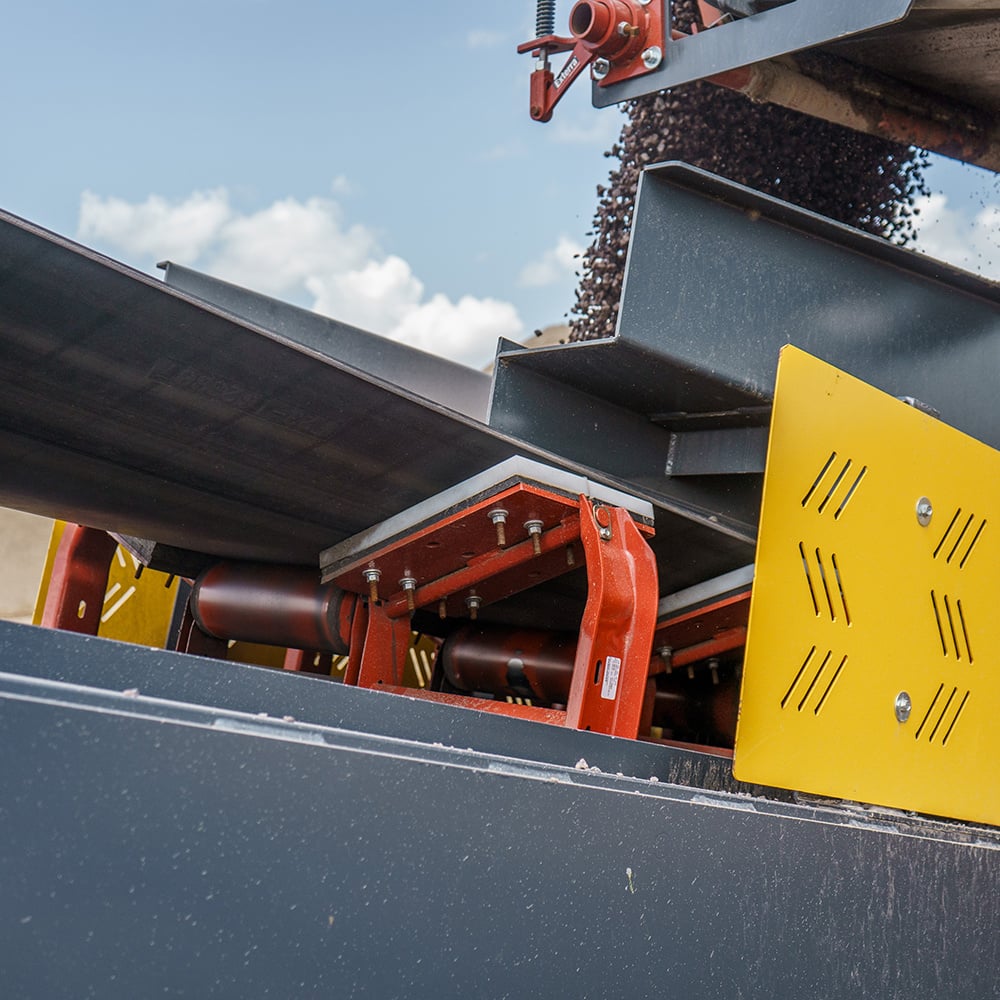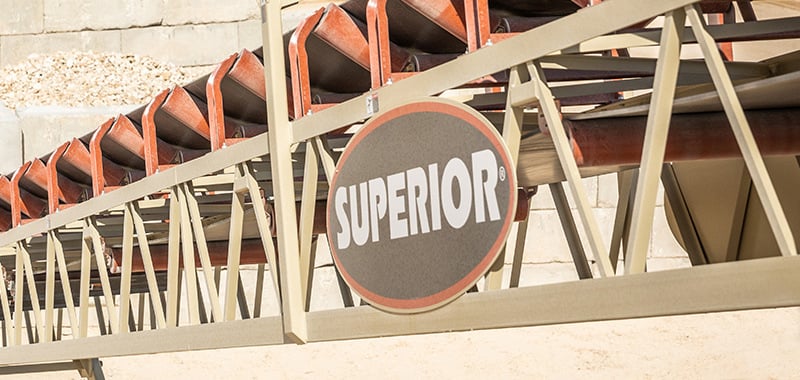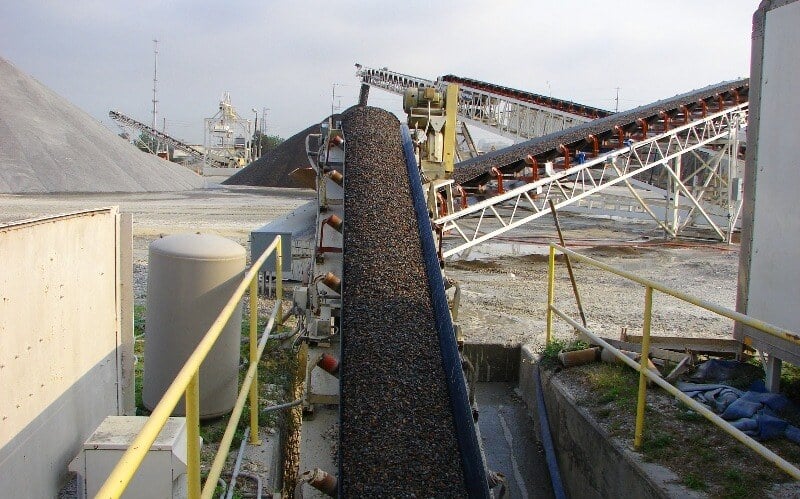Tech Tip: Conveyor Load Zones
Prevent Spillage with Simple Maintenance
Material spillage is a costly proposition. Add it up – tons of lost material per year, additional labor for cleanup, significant safety risks, and excessive wear and damage to conveyor components caused by resulting belt mistracking. Yet, material spillage is common to many operations due to a lack of good preventive maintenance.
Use this simple, three-step program and you will certainly minimize any spillage problems.
1. Check Transfer Points
Ideally, each transfer point should be designed to load the belt in the center and at a uniform rate. Off-center loading can be corrected by using systems such as deflectors, liners, baffles, screens, grizzly bars, or curved loading chute–all of which are designed to consistently direct material flow onto the center of the belt.
2. Maintain Proper Scraper Tension
For effective cleaning, belt scrapers should be installed at the appropriate locations and at the proper angles. Since multiple belt cleaning systems are often factory-installed, operators need only concern themselves with maintaining accurate belt scraper tension and replacing worn scrapers.
The majority of blade-to-belt cleaning systems feature some form of tensioning device, which should typically be checked or adjusted on a weekly basis. An improperly adjusted belt scraper will lead to material carryback, premature wear to components, and eventual spillage and belt mistracking headaches. When retensioning is required, the cleaner and tensioning unit should allow for easy access and maintenance, without the need for special tools or multiple service technicians. Tensioning instructions are often located on the side of the belt scraper manufactures bracket.
3. Select Proper Skirtboards
Skirtboards are key to preventing material spillage in and around the loading zone – from the moment that material leaves the loading chute and until it reaches belt speed. So skirting usually extends from the loading chute and along some distance of the conveyor. As a rule of thumb, skirtboard length will average 2- to 3-feet per 100 feet-perminute (61 to 91cm per 30m-per-minute) of belt travel.
Skirting should make slight contact with the belt, and should be mounted close enough so that the gap can be sealed with flexible rubber or urethane strips. Multiplelayer edge seals (a primary seal against the chute wall and a secondary seal that lies on the belt surface outside the chute) are best as they can contain any escaping fines.
Note that seal wear life is dependent upon minimizing belt sag, which can allow material entrapment. And, wear liners should be installed inside the chute to protect the sealing strips from the forces of the load. Also, to prevent spillage and maintain skirting life, hoppers should be lined and/or checked for wear areas.
Remember, material spillage is money lost. So, don’t send the crew out to shovel the same area time after time. The prevention of material spillage isn’t rocket science. It’s just simple, required maintenance.


OptimizeU - Strategic Learning
Pursue greater production with comprehensive online courses in crushing, screening, conveying, and washing. Check out the premiere training resource in the construction aggregates industry.
Related Content

Conveyor Maintenance: Basic Design to Increase Your Uptime
Designing a conveyor to be maintenance friendly means providing adequate provisions for necessary service from the onset.

Conveyor Belt Mistracking: Causes & Cures
There’s no need for a costly and complete system overhaul if a simple tweak will truly solve the problem.

Conveyor Transfer Points: Useful Tips to Eliminate Spillage
Preventing spillage at transfer points is imperative, since cost reductions from elimination at one transfer are significant.
Talk to an Expert
Need more information? We'll get you in contact with a product expert in your area.
